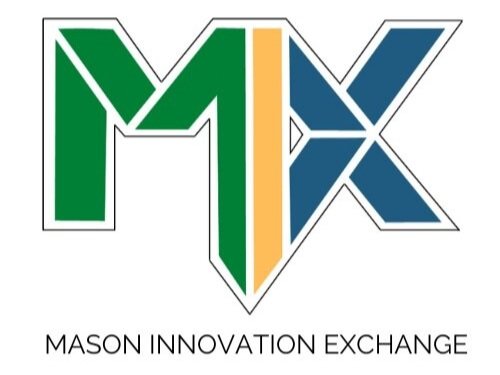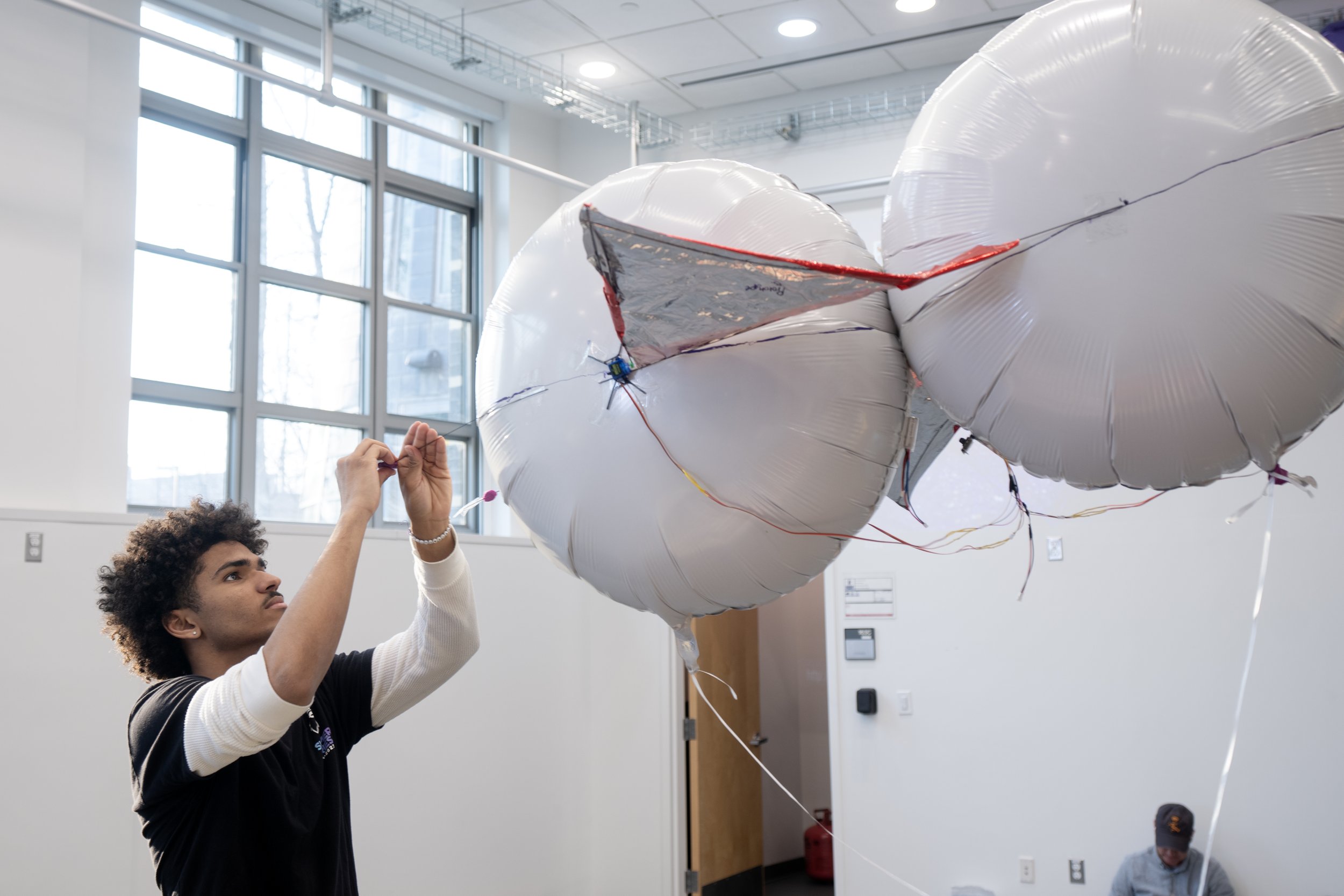MIX Biologically-inspired, Lighter-than-air, Instructional, Mechatronics Program (BLIMP)
Sponsored by KEEN, the Kern Entrepreneurial Engineering Network, the MIX, in collaboration with Assistant Professor Daigo Shishika, PhD of Mason’s Mechanical Engineering Department, will be offering the MIX Biologically-inspired, Lighter-than-air, Instructional, Mechatronics Program (BLIMP) during this Fall 2025 semester to introduce Mason students to unmanned aerial vehicles (UAVs), autonomous systems, and advanced manufacturing through the hands-on design of flapping-wing lighter-than-air blimps.
Over seven weeks, 18 students (six teams of three) will build their own bio-inspired blimps, gaining experience in mechanical systems, microcontrollers, computer vision, aircraft dynamics, and system integration, with the course culminating in a judged design competition. Blimps, known for their energy efficiency, collision resistance, and ability to operate safely near humans, serve as an ideal platform for robotics education. Students will learn vehicle dynamics, modeling, mechanism design, and control theory, while also exploring how body shape impacts aerodynamics and stability, and how bio-inspired wing designs enhance performance. A major focus is additive manufacturing, where students engage in material selection (balancing strength, weight, and cost-effectiveness), CAD modeling to generate 2D and 3D designs, and 3D printing using processes such as Fused Filament Fabrication (FFF) and Selective Laser Sintering (SLS), followed by post-processing for finishing and assembly.
This interdisciplinary program emphasizes mechanical engineering while integrating electrical engineering and computer science, ultimately providing students with innovative skills and practical experience in robotics, autonomy, and advanced fabrication.
See video documentation for reference:
building flapping-wing lighter-than-air vehicles (blimp)
The workshop begins Wednesday, September 16, runs weekly from 4:30–6:30PM for 10 weeks, and is open to students from all majors. Successful completion earns a GMU digital micro-credential. Applications are due by midnight on Wednesday, September 10, and acceptances will be sent by Monday, September 15.
Waitlisted students must attend the first session to maintain eligibility.
“I truly had a lot of fun every week working with my team!”
Fall 2025 10- WEEK COURSE OUTLINE:
Tuesdays 4:30-6:30PM in the MARC
September 16 - Week 1
Introduction and Building AirSwimmers
September 23 - Week 2
Flapping Wings and ESP32 Activities lecture
Arduino and PS3 Setup lecture
Simple servo sweep using breadboard
September 30 - Week 3
Feedback Control and Wiring lecture
Ultrasonic sensor feedback example
Teach wiring basics and start wiring servos
October 7 - Week 4
Envelope Dynamics and Wing Making lecture
Control surfaces
Building first blimp body. Attach made wings
Start brainstorming blimp designs
October 14 - Week 5
Depending on progress, could have a new lecture slide on vision and resources.
Discuss design ideas with faculty
Experimental phase
Offer envelope making guide
October 21 - Week 6
Finish core wiring
Have a near finalized plan for blimp design and capabilities
October 28 - Week 7
Last week to request additional purchases or components
November 4 - Week 8
Election Day, classes do not meet, but still offer more time to work towards final product
November 11 - Week 9
Veterans Day. Last week before finals. Start sharing presentation with faculty.
November 18 - Week 10
Final Presentation and Competition






